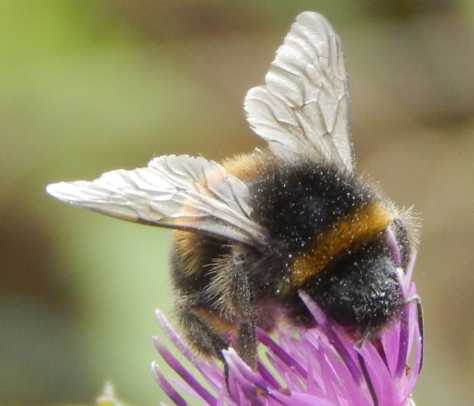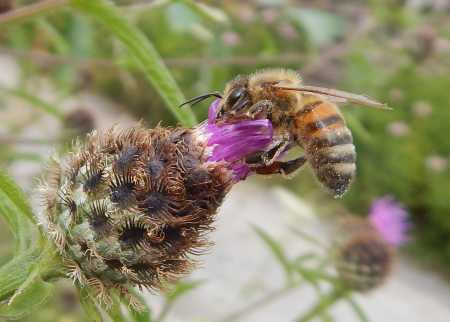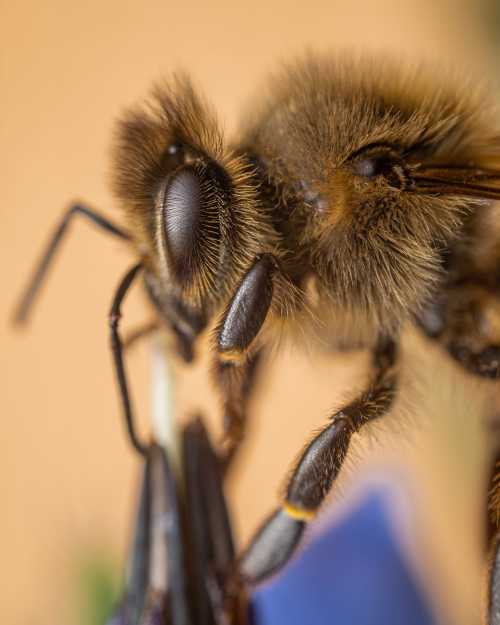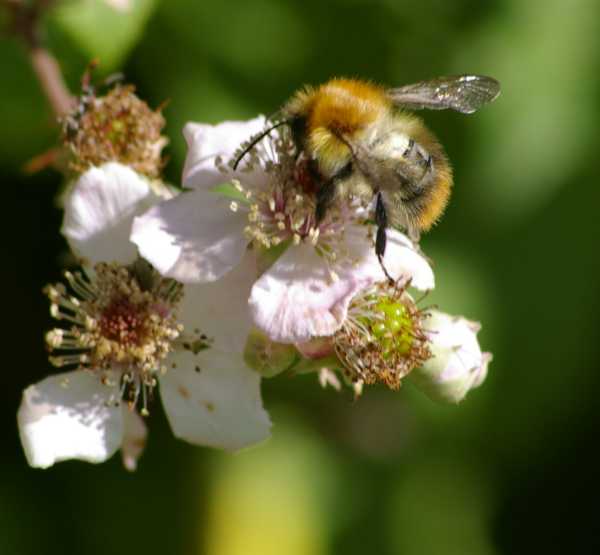Do Bees Have Sticky Hair?
You may have heard the joke: 'Why do bees have sticky hair?'. The answer is, 'because they use honeycombs'.
However, the reality is that in a sense, bees really do have sticky hair, which enables them to collect pollen. But this stickiness is nothing to do with a type of gluey substance coating the hair of the bee.
It's something different....
Why Bees Have Sticky Hair....Our Bee Friends Are Electric!

Some of you may have heard a pop tune from 1979 called 'Are Friends Electric?' by Gary Numan (a video has been added to the end of this article). Well it turns out, our 'bee friends' are electric! It's all down to their hairy bodies.
The electromagnetic properties of bee hair enables pollen to stick to it, acting like a gentle adhesive, but without the need for a gluey substance.
But why and how does this work? The explanation is as follows.
It is known that two objects that have an excess of one type of electric charge repel each other when relatively close together. However, two objects that have excess opposite electric charges, with one having a positive charge and the other a negative charge, actually attract each other when relatively near, potentially causing the objects to 'stick' together.
It has been found that foraging bees typically possess a net positive electric charge. The positive electric charge attracts to it things that have a negative electric charge. Pollen fits this description as it has a negative electric charge.
Additionally, it has been demonstrated that bees can detect floral electrical fields, which act like visual cues for the bees – attracting them to more negatively charged flowers (and pollen).
How is this positive electrical charge in bees created?
It has been proposed that there is a link
between the flow of air currents around the bees’ hairs as they forage, and the
formation of electromagnetic charge.
So, while bees are foraging, the air currents created around their hairs as they fly lead to the creation of the positive electrical charge, which then enables the adherence of negatively charged pollen to the bee hairs.
Specially adapted hairs
In addition to this, the collection of pollen is aided in another way.
When viewed under a powerful microscope, many bee hairs feature branching structures, which help to trap the pollen as it is attracted to the the bee's furry body.
Pollen is also collected and carried back to a nest on specially adapted hairs called scopa (pollen brush - such as on leafcutter bees) or corbicula (pollen baskets - such as on bumble bees and honey bees).
You can read more about the subject of hairy bees on my page: Why do bees have hair?
In the meantime, here is the video of 'Are Friends Electric'.
Resources
- Roberts RB, Vallespir SR. 1978 Specialization of hairs bearing pollen and oil on the legs of bees (Apoidea: Hymenoptera). Ann. Entomol. Soc. Am. 71, 619-627.
- Koh K. and Robert D. 2020 Bumblebee hairs as electric and air motion sensors: theoretical analysis of an isolated hair. J. R. Soc. Interface.172020014620200146
If you found this page helpful or interesting, I'd really be grateful if you would share it with others - if not this page, perhaps another, such as Gardening For Bees.
Thank you so much :) .



